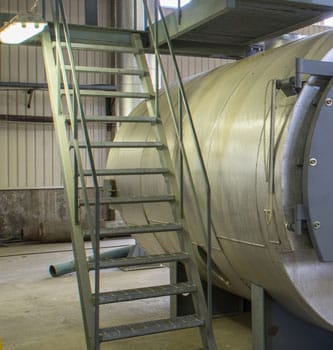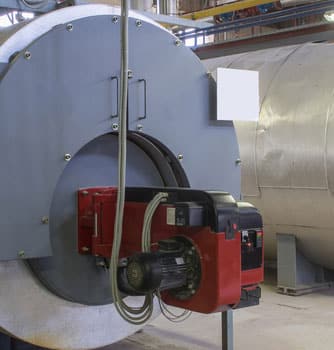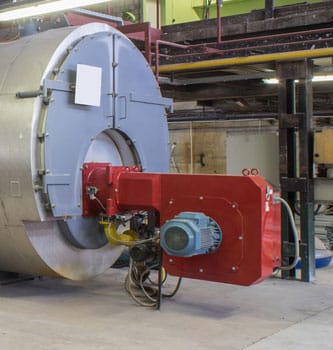Boiler TDS Systems
Boiler TDS systems, also known as Total Dissolved Solids systems, play a crucial role in maintaining the efficiency and longevity of industrial boilers. These systems are designed to monitor and control the concentration of dissolved solids in the boiler water, ensuring that it falls within the recommended limits. By effectively managing the TDS levels, these systems help prevent scale buildup, corrosion, and foaming in the boiler, which can lead to decreased efficiency, increased fuel consumption, and even system failure. With their ability to accurately measure and regulate the TDS levels, boiler TDS systems are a vital component in ensuring optimal boiler performance and safety.



Speak with our experts
Fill out our quick and easy contact form with your enquiry and we'll get back to you.
What is Boiler TDS?
As a boiler generates steam, impurities found within the boiler feed water do not evaporate and begin to concentrate in the boiler. As the concentration of these impurities (known as dissolved solids) increases further, it begins to affect the phase-change process of water into steam by increasing the stability of the bubbles at the (boiling) water-steam interface.
Depending on a boiler’s capacity (kg/hr) and operating pressure (barg), stable steam bubbles start to accumulate in the steam space within the boiler chamber. If untreated, these bubbles are carried forward into the steam main, causing the raised steam to be exceptionally wet and contain boiler water and suspended solids. This leads to the steam main and ancillaries – such as control valves, steam traps and flowmeters – being contaminated with impurities, which consequently affect their service life.
Whilst the formation of stable steam bubbles (also known as foaming) can be caused by high levels of contaminants produced by oils and fats, the most common cause of carryover is due to increases in the Total Dissolved Solids (TDS) levels in the boiler water. Assuming other contaminant sources are properly managed, careful monitoring and control of boiler water TDS levels would ensure that the risks of foaming and carryover are minimised.
Boiler TDS Options
Valveforce can provide a range of services as follows:
Turnkey Solutions:
- Site surveys
- Bespoke feed tank design and construction
- Installation
- Commissioning
- Servicing/maintenance contract
Valveforce can also supply and install the following solutions and equipment:
Complete TDS System inclusive of:
- Electric TDS Control valve with
- TDS Controller - panel mounted
- TDS Probe
- Spool piece
- Valves
- Sample cooler
Valveforce can also supply and install the control panels:
TDS Control Panels:
- With modulating controller for the TDS system
- With Blowdown timer for bottom blowdown
- Within Valveforce designed control panels
- Or incorporated within the existing boiler panel
Applications/Case Study (Examples of Product Usage)
TDS Levels
Whether done manually or via an automated control system, blowing down a steam boiler to maintain acceptable TDS levels helps to ensure the steam delivered to a process is both clean and dry.
Permissible TDS levels vary depending on the type of boiler in operation. For example, high-pressure shell boilers have a maximum permissible TDS level of 1,000 parts per million (ppm). For horizontal fire tube boilers, this can be as much as 10,000 ppm.
Calculating Blowdown Rate
To calculate the blowdown rate for a steam boiler, you will need to know the TDS (ppm) levels of the required boiler water and feed water. These values can usually be obtained from water treatment records or conductivity of samples obtained from the boiler (via a sample cooler) and the feed water line (not the make-up water).
The blowdown rate can be established using the following equation:
Blowdown Rate = FS / B-F
Where:
F = Feed Water TDS (ppm), S = Steam Generation (kg/hr), B = Required Boiler Water TDS (ppm).
Valveforce Boiler TDS Case Study
Boiler Upgrade
Milliken, a floor tiling manufacturer, recently needed a solution to their boiler level controls and bottom blowdown system that was out of date.
The issue with having out of date controls is that getting replacement spares can no longer be done, leading to serious issues when parts malfunction.
The company also wanted to update the boiler house to unmanned status by adding a PM5 system, which means a specially trained boiler supervisor does not need to be onsite every 24 hours in the scheme they have.
With our expertise, Valveforce advised on the best options and equipment to use to achieve these upgrades, including new TDS controls.
The turnkey project included the design of a new control panel for the whole boiler, new pipework on the TDS and a completely new TDS system.
Blowdown TDS and Level Control Docs
Milliken, a floor tiling manufacturer, recently needed a solution to their boiler level controls and bottom blowdown system that was out of date.
The issue with having out of date controls is that getting replacement spares can no longer be done, leading to serious issues when parts malfunction.
The company also wanted to update the boiler house to unmanned status by adding a PM5 system, which means a specially trained boiler supervisor does not need to be onsite every 24 hours in the scheme they have.
With our expertise, Valveforce advised on the best options and equipment to use to achieve these upgrades, including new TDS controls.
The turnkey project included the design of a new control panel for the whole boiler, new pipework on the TDS and a completely new TDS system.

